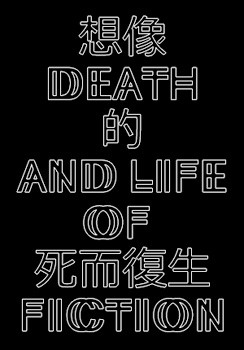Taipei Biennial 2012
29 Sep 2012 - 13 Jan 2013
Modern Monsters / Death and Life of Fiction
29 September, 2012 – 13 January, 2013
Curator: Anselm Franke
The Taipei Biennial 2012 takes as its point of departure the ancient Chinese monster known as Taowu, whose evolution has been traced by the literary historian David Der-Wei Wang in his book The Monster That is History. Wang shows that somewhere in the course of Chinese history, writers and historians began to identify the vicious monster Taowu with history itself, since it could foresee and thwart human intentions. The Taowu thus represents the human failure to master history and occupies the blind spot of different historical rationales. It is a fictional representation and symptomatic expression of that which notoriously escapes human reasoning and historical accounts. Wang suggests that it is modern Chinese history in particular that lends itself to a reading through the Taowu, against the backdrop of a twentieth century characterized by utopian aspirations notoriously overshadowed by systemic violence.
The Taipei Biennial 2012 explores the possibility that Taowu is a common experience of all modernity. It is the continuity of violence and brutality exerted in the name of enlightenment and rationality that turns the monster into a signifier of history. This is a history continuously buried in the contradictions of modern rationality itself. Yet rather than engaging with the mass cultural aesthetics of monstrosity — a “spectacle of violated boundaries” — the Biennial looks instead at dialectic strategies that address, expose, and disarm the anonymous, systemic monstrosity of modernity, speaking of the way its normative matrix strangles the imaginary of the present and our horizons of possibility.
This deadlock is disarmed in fiction, which reveals the blind spots of historiographic and documentary accounts, and which addresses the fundamental underside, the systemic terror, that lurks behind modernity’s emancipatory promises. Throughout the exhibition, the Taowu is encountered never as a stable identity or image, but as permanently shape-shifting inversions, which, situating us at the tilting point occupied by the Taowu, speak of the lives and deaths of fictions within the condition and mythology called modernity.
The Taipei Biennial 2012 engages with the re-narration of modern histories at these tilting points. Woven into the fabric of more than forty contributions are six mini-museums. These minimuseums, along with the works and projects surrounding them, move between documents and fictionalizations, creating a montage in which the very figure of the monster assumes ever-new identities. The result is a parcours of “multi-stable figures” — those well-known graphic depictions in which two different perceptions are possible, and the relation between figure and background can be reversed.
Artists:
Reza Abedini
Harold Melvin Agnew
Nabil Ahmed
John Akomfrah
Maria Thereza Alves
The Museum of Ante-Memorials
Adam Avikainen
Ashish Avikunthak
Eric Baudelaire
Bavand Behpoor
Erick Beltrán
Fernando Bryce
Francisco Camacho
Chao-Tang Chang
Ting-Ya Chang
Chen Szuting
Yin-Ju Chen
Chen Chieh-Jen
Yu-Cheng Chou
The Museum of Crossings
Hanne Darboven
Jason Dodge
Juan Downey
Jimmie Durham
Harun Farocki
Omer Fast
Robert Filliou
Simone Forti
Peter Friedl
Simon Fujiwara
Andrea Geyer
Yervant Gianikian & Angela Ricci Lucchi
Frank B. Gilbreth
The Museum of Gourd
Virlani Hallberg
Lawrence Abu Hamdan
Daizaburo Harada
James T. Hong
Channa Horwitz
Hou Chun-Ming
Hsu Chia-Wei
Hsu Ming-Sheng
Hannah Hurtzig
The Museum of the Infrastructural Unconscious
Luis Jacob
Ken Jacobs
Maryam Jafri
Chia-En Jao
Rajkamal Kahlon
Kao Chung-Li
Katarzyna Kobro
Joachim Koester
Kung Yi-Fang
Jompet Kuswidananto
Labour Exchange Band
Marysia Lewandowska & Neil Cummings
Jei Li
Hongjohn Lin
Richard Lin
Lin Swallow Y
Armin Linke
Liu Ding
Joven Mansit
Angela Melitopoulos & Maurizio Lazzarato
The Museum of the Monster That Is History
Deimantas Narkevičius
Jakrawal Nilthamrong
Boris Ondreička
Willem Oorebeek
The Otolith Group
Jean Painlevé
Pak Sheung Chuen
Kelvin Kyung
Kun Park
Pratchaya Phinthong
The Museum of Rhythm
Ching-Yueh Roan
Roee Rosen
Gerhard Rühm
Tomo Savić-Gecan
Yashas Shetty
Andreas Siekmann
Elisa Strinna
Sun Xun
Shiro Takahashi
Teng Chao-Ming
Territorial Agency
Rosemarie Trockel
Tsai Chih-Hsien
Anton Vidokle & Hu Fang
Danh Vo
Peter Watkins
Eyal Weizman & Paulo Tavares & Steffen Krämer
Tony Chun-Hui Wu
Yao-Chung Wu
Wei-Li Yeh
Wei-Li Yeh & others

